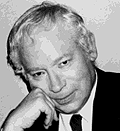Solar + Battery Car DIY STEM Kit
$11.99$5.95
 Steven Weinberg was educated at Cornell, Copenhagen, and Princeton, and taught at Columbia, Berkeley, M.I.T., and Harvard, where from 1973 to 1982 he was Higgins Professor of Physics. In 1982 he moved to The University of Texas at Austin and founded its Theory Group. At Texas he holds the Josey Regental Chair of Science and is a member of the Physics and Astronomy Departments. His research has spanned a broad range of topics in quantum field theory, elementary particle physics, and cosmology, and has been honored with numerous awards, including the Nobel Prize in Physics, the National Medal of Science, the Heinemann Prize in Mathematical Physics, the Cresson Medal of the Franklin Institute, the Madison Medal of Princeton University, and the Oppenheimer Prize. He also holds honorary doctoral degrees from a dozen universities. He is a member of the National Academy of Science, the Royal Society of London, the American Academy of Arts and Sciences, the International Astronomical Union, and the American Philosophical Society. In addition to the well-known treatise, Gravitation and Cosmology, he has written several books for general readers, including the prize-winning The First Three Minutes (now translated into 22 foreign languages), The Discovery of Subatomic Particles, and most recently Dreams of a Final Theory. He has written a textbook The Quantum Theory of Fields, Vol. I. and Vol. II.
Steven Weinberg was educated at Cornell, Copenhagen, and Princeton, and taught at Columbia, Berkeley, M.I.T., and Harvard, where from 1973 to 1982 he was Higgins Professor of Physics. In 1982 he moved to The University of Texas at Austin and founded its Theory Group. At Texas he holds the Josey Regental Chair of Science and is a member of the Physics and Astronomy Departments. His research has spanned a broad range of topics in quantum field theory, elementary particle physics, and cosmology, and has been honored with numerous awards, including the Nobel Prize in Physics, the National Medal of Science, the Heinemann Prize in Mathematical Physics, the Cresson Medal of the Franklin Institute, the Madison Medal of Princeton University, and the Oppenheimer Prize. He also holds honorary doctoral degrees from a dozen universities. He is a member of the National Academy of Science, the Royal Society of London, the American Academy of Arts and Sciences, the International Astronomical Union, and the American Philosophical Society. In addition to the well-known treatise, Gravitation and Cosmology, he has written several books for general readers, including the prize-winning The First Three Minutes (now translated into 22 foreign languages), The Discovery of Subatomic Particles, and most recently Dreams of a Final Theory. He has written a textbook The Quantum Theory of Fields, Vol. I. and Vol. II.